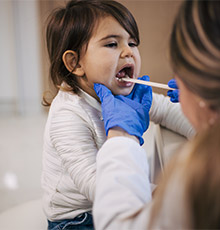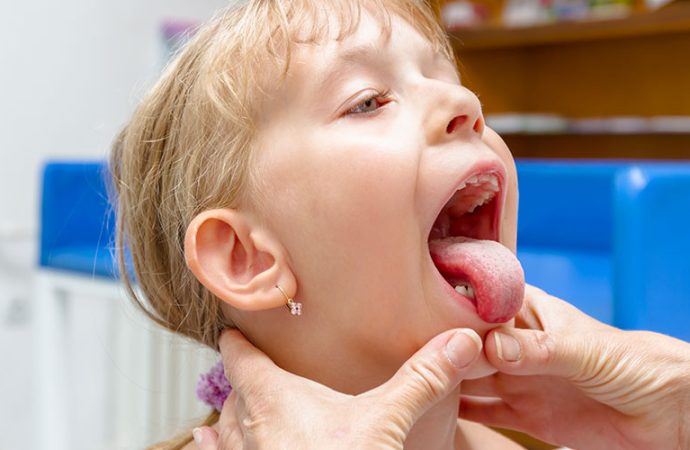Introduction Children, being social beings and often attending nursery or playgroups, are susceptible to picking up viruses, leading to various common ailments. Tonsillitis, characterized by the inflammation of the tonsils, is a prevalent condition in children, although it can affect adults and teenagers as well. In this comprehensive guide, we will explore the signs, causes,
Introduction
Children, being social beings and often attending nursery or playgroups, are susceptible to picking up viruses, leading to various common ailments. Tonsillitis, characterized by the inflammation of the tonsils, is a prevalent condition in children, although it can affect adults and teenagers as well. In this comprehensive guide, we will explore the signs, causes, and treatment options for tonsillitis in children.
What is Tonsillitis?
Tonsillitis is the inflammation of the tonsils, two round lumps located at the back of the throat. While it is more common in children, it can affect individuals of all ages. The primary cause is typically viral, with the infection spreading through various means such as coughing, sneezing, speaking, or physical contact. In some instances, bacterial infections can also lead to tonsillitis.

Image by: www.stanfordchildrens.org/
Symptoms of Tonsillitis in Children
Recognizing the symptoms of tonsillitis is crucial for prompt identification and appropriate care. The condition often resembles a severe cold or flu. Key symptoms include:
- Sore Throat: The hallmark symptom, often accompanied by red and swollen tonsils.
- Difficulty Swallowing: Children may experience discomfort or pain while swallowing.
- High Temperature: A fever of 38°C or higher is common.
- Cough: Persistent coughing may be present.
- Headaches: Children may complain of headaches.
- Nausea: Feeling sick or having an upset stomach.
- Earache: Discomfort in the ears may be a symptom.
- Fatigue: Tiredness and general lethargy.
In severe cases, additional symptoms may manifest, such as swollen glands in the neck or blisters on the tonsils.

Image by: babycenter.com
Causes of Tonsillitis in Children
Understanding the causes of tonsillitis is essential for effective prevention and management. The primary culprits are viruses, often of the respiratory kind, but bacterial infections can also be responsible. The modes of transmission include coughing, sneezing, speaking, and close physical contact.
Treatment of Tonsillitis in Children
While tonsillitis generally resolves on its own within a few days, supportive measures can enhance the child’s comfort and expedite recovery. Treatment options include:
- Rest and Sleep: Ensure the child gets adequate rest and quality sleep.
- Hydration: Encourage regular water intake to soothe the throat and prevent dehydration.
- Soft Foods: Opt for easily digestible and soft foods like soups, yogurts, mashed potatoes, and cooked vegetables.
- Medication: Administer paracetamol-based medicines, such as Calpol, for reducing fever and alleviating pain. Follow the recommended dosage based on the child’s age or weight. Children’s ibuprofen can also be used.
- Throat Sprays: Consider throat sprays to ease sore throats, but consult with a pharmacist for suitability, especially for younger children.
When to Consult a Doctor
While tonsillitis often follows a self-limiting course, persistent symptoms or worsening conditions warrant medical attention. Consult a doctor if:
- Symptoms persist beyond four days.
- Pus-filled spots appear on the tonsils.
- Rare complications, such as a quinsy (throat abscess), develop.
- Difficulty breathing is observed.
In cases where bacterial infections are identified, the doctor may prescribe antibiotics, and it is crucial to complete the full course of medication.

Image by: https://www. money owl.com
Conclusion
A comprehensive understanding of tonsillitis in children, encompassing symptoms, causes, and treatment options, is vital for parents and caregivers. Timely and informed care can significantly contribute to the child’s comfort and expedite the recovery process. While most cases are viral and resolve with supportive measures, the awareness of potential complications ensures a proactive approach to seek medical assistance when necessary.
navigating tonsillitis in children involves recognizing the distinct symptoms, understanding the underlying causes, and adopting effective treatment strategies. While viral infections are the primary culprits, bacterial origins can also contribute to this common childhood ailment. Timely and informed care, including rest, hydration, and appropriate medication, can significantly alleviate symptoms and enhance the child’s well-being. Parents and caregivers should remain vigilant for persistent or severe symptoms, seeking prompt medical attention when necessary. By fostering a comprehensive understanding of tonsillitis, we empower ourselves to provide optimal care for our children’s health.





















Leave a Comment
Your email address will not be published. Required fields are marked with *